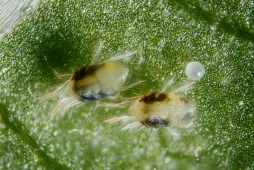Peperomia magnoliifolia, a useful peperomia
If Jack Sparrow invites you aboard the Black Pearl, consider giving him a Peperomia magnoliifolia as a thank-you gift. Native to Central America, this plant of the Piperaceae family will be at home in the Caribbean Sea. But above all, it is a welcome remedy for a disease that decimates sailors.
How to recognize Peperomia magnoliifolia?
Peperomia magnoliifolia is a perennial herbaceous plant. It grows to a height of 50 centimetres. In its natural habitat, it can grow by climbing trees or crawling over rocks. In pots, it adopts an upright, bushy habit.
Stems and petioles are hairless. Green, they may be spotted with red.
Elliptical leaves have a heart-shaped base and rounded apex. The smallest are four centimetres long and two centimetres wide. The largest are fourteen centimetres long and six centimetres wide. The green leaf blades are sometimes speckled with red.
It's not easy to tell the difference between peperomia obtusifolia and Peperomia magnoliifolia. Specialists will tell you that the former has fleshy leaves and the latter waxy blades. For the less expert eye, it's easier to look at the veins. When they're marked and visible, you're looking at a Peperomia magnoliifolia.
Peperomia magnoliifolia is cultivated for its evergreen foliage. But even indoors, the plant blooms. The flowers appear at the end of a green, white or yellow spike almost 20 centimetres long. The bracts are less than a centimetre long.
They are replaced by the fruit, a brown or black sphere with a hooked tip.
Peperomia magnoliifolia is non-toxic, on the contrary. It is used in traditional medicine for its anti-inflammatory properties. If you're considering a career as a pirate or planning a long sea voyage, take a few specimens with you. The plant is said to prevent and treat scurvy!
Our maintenance tips
Peperomia magnoliifolia is an undemanding tropical plant. The main thing is not to overwater it. It also appreciates light, but fears direct sunlight. Finally, it needs warmth. Never leave it in a room where the temperature falls below 13 degrees, and keep it away from draughts.
Watering
Water when the substrate is dry on the surface, for about three centimeters. Use non-calcareous water, such as rainwater, filtered water or mineral water.
Don 't let water stagnate in the planter or saucer, as it may rot the roots.
Spray
In nature, peperomia magnoliifolia benefits from high humidity. Indoors, the air is too dry for them. To remedy this, spray the foliage with rainwater at room temperature.
Fogging also combats attacks by mites and red spiders.
Repotting
Every spring, repot your Peperomia magnoliifolia to give it more space.
Obtain a pierced pot one size larger than the previous one. Place a bed of clay balls or non-limestone gravel at the bottom to promote drainage. Then fill with a nutrient-rich potting soil, such as green plant compost, to within three centimetres of the rim. This way, water won't overflow during watering.
To create a close environment that will remind your plant of its natural surroundings, you can place its pot on a saucer filled with wet clay balls. They'll diffuse a much-appreciated humidity!
Fertilization
To promote the growth of your Peperomia magnoliifolia, apply fertilizer in spring and summer.
Add green plant fertilizer to the watering water in the doses prescribed by the manufacturer.
Cleaning
Dust sometimes accumulates on the leaves of your Peperomia magnoliifolia and interferes with photosynthesis.
You can gently clean the foliage with a sponge or a clean, wet cloth.
If your plant looks dirty, you can add some black soap to the water.
You can gently clean the foliage with a sponge or a clean, wet cloth.
If your plant looks dirty, you can add some black soap to the water.
Prune
Remove wilted leaves usinga clean, sharp tool.
Pinch
Pinch your Peperomia magnoliifolia during its growing season.
Pinch stem ends to optimize branching and maintain a compact habit.
Cutting
Cutting is carried out during the strong growth phase, generally in spring and early summer.
Locate a secondary stem about ten centimeters long and separate it from the main stem using scissors, a knife or pruning shears. They should be clean and sharp.
Prepare a pierced pot with a bed of clay balls at the bottom for drainage. Pour in a mixture of sand and potting soil. Preferably use a horticultural or seedling potting soil, as these are rich in nutrients. Plant your graft in this pot.
Place your cutting in a bright spot away from direct sunlight and water.
Disease / Threat
Information
| Family | Piperaceae - Piperaceae |
| Type | Peperomia - Peperomia |
| Species | Peperomia magnoliifolia - Peperomia magnoliifolia |
| Lifecycle | Perennial |
| Foliage | Evergreen |
| Exposures | |
| Substrat | |
| Planting method |
In pots |
| Categories | |
| Tags |
Beginner Fritillary |
| Origin |
Central America |
| Hardiness (USDA) | 11a |
| Leaf color |
|
| Flower colors |
|
| Fruit colors |
|
Discover plants from the same family
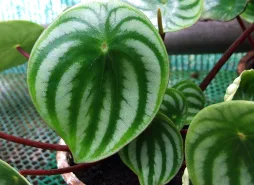
Peperomia Watermelon
Discover
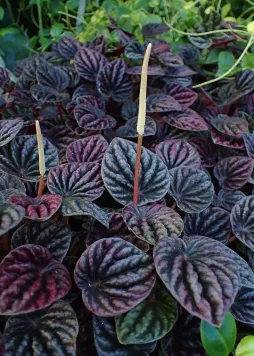
White cane
Discover
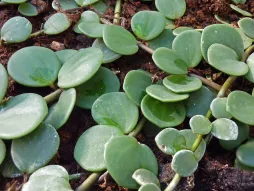
Peperomia Hope
Discover
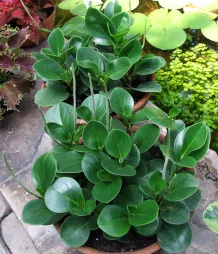
Peperomia obtusifolia
Discover













